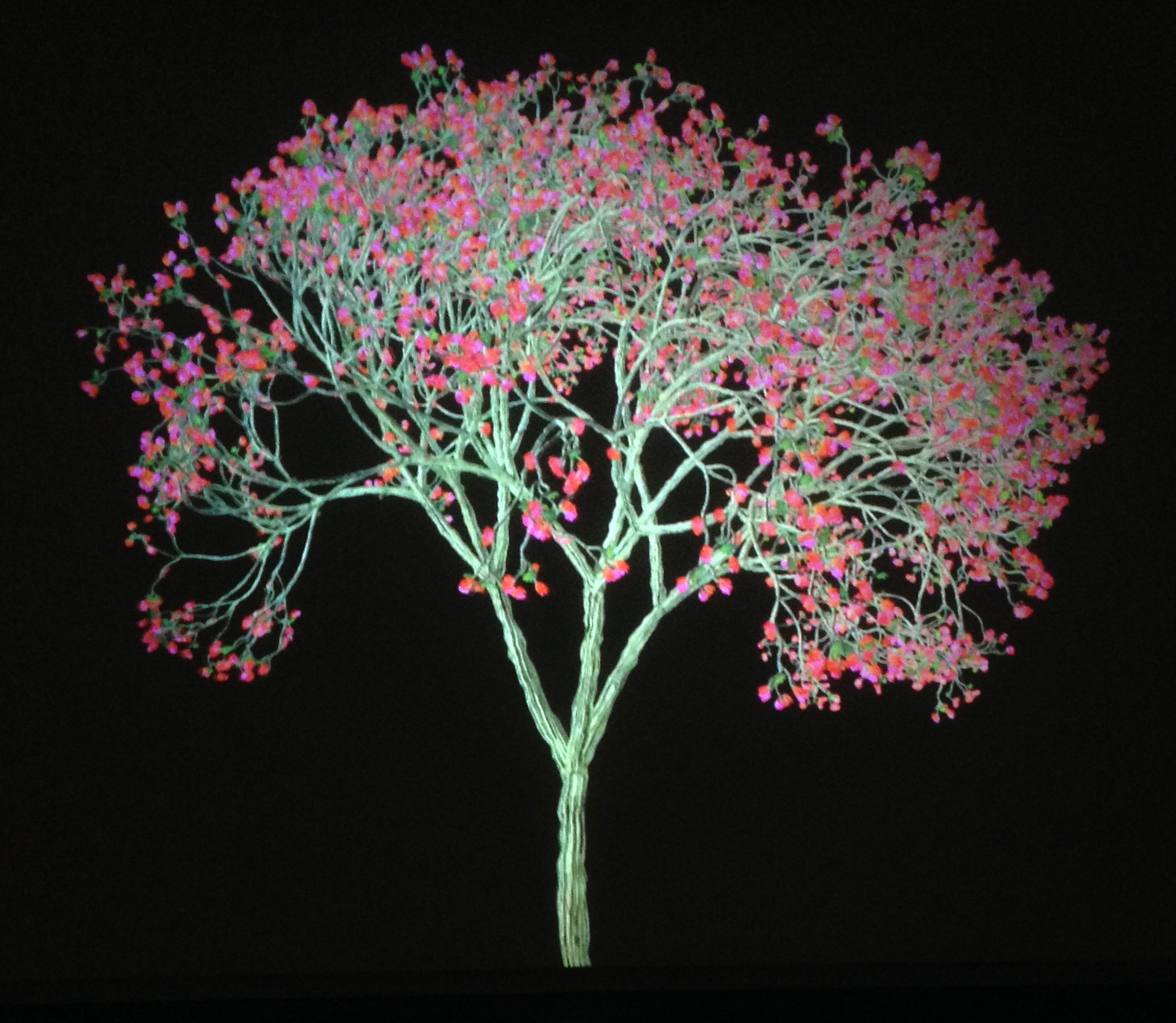Art and memorials are inseparable, and some might consider prehistoric funerary rites to be the origin of what we now consider Western art. During her November visit to Tacoma, Los Angeles artist Jennifer Steinkamp was in the awkward position of installing a video, called Shimmering Tree, that was originally created in 2007 as a tribute to her mentor and friend Mike Kelley. Then he committed suicide in 2012, so the piece now looks to us like a memorial, regardless of Steinkamp’s intent. Filling most of a 35-foot-high wall, her tree runs through four seasons and colors in about eight minutes, swaying in the wind, budding, sprouting leaves and flowers, then shedding them again. Here are the natural cycles that we associate with life and death (and again, art, and other seasonal rituals). The big dark gallery is solemn, like a church; and a table with reference books about Kelley—an avant-gardist rarely shown in the Northwest—almost seems an altar. Still, Steinkamp says her tree “is more like a dedication to him, certainly not a representation of him. It’s a piece in honor of him.” Trees and natural imagery don’t really figure in Kelley’s own work, which often included sex and intimations of violence, sometimes represented with plushies and stuffed animals. (As a musician, he and his band Destroy All Monsters shared a stage with Sonic Youth.) He was a figure associated mostly with the L.A. underground scene of the ’80s, a city boy. Steinkamp’s video tree is artificial, not a representation of anything you’d see in a forest or park; it’s an abstracted, Photoshop creation. Today, says Steinkamp, “It became a memorial, which is peculiar. Funny how that happens.” Tacoma Art Museum, 1701 Pacific Ave., 253-272-4258, tacomaartmuseum.org. $8–$10. 10 a.m.–5 p.m. Wed.–Sun. Ends Jan. 26.
Art and memorials are inseparable, and some might consider prehistoric funerary rites








